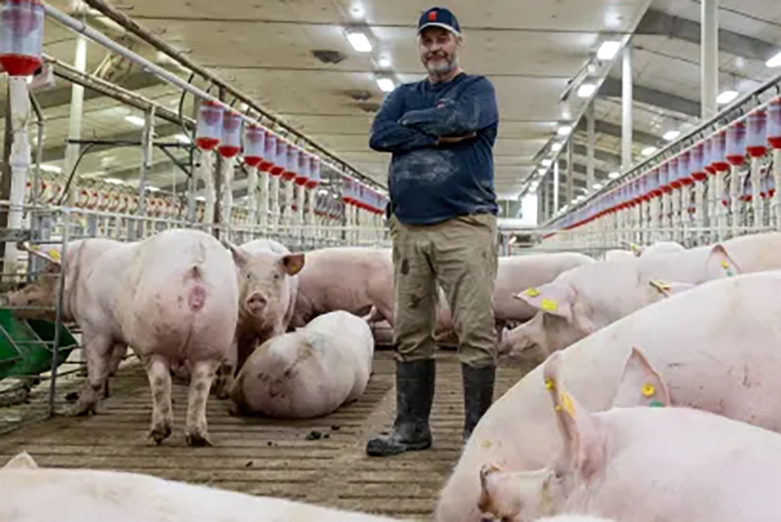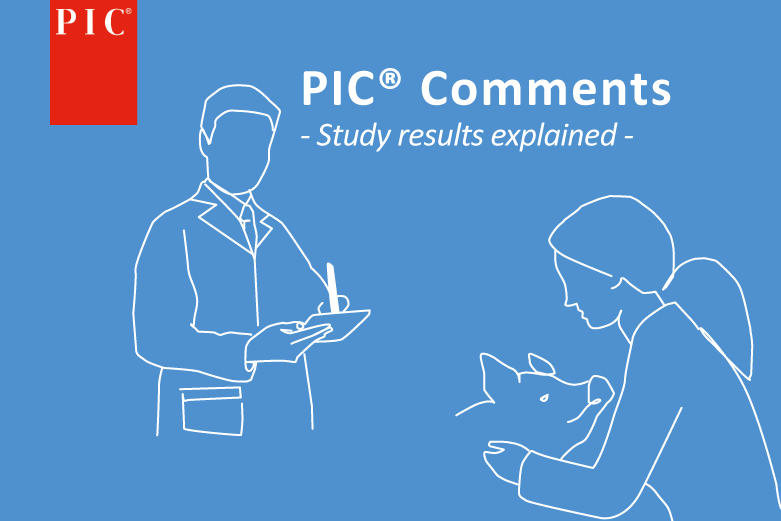Performance improvements justify increasing gilt selection pressure
Increased gilt selection pressure results in higher sow retention rates, higher sow lifetime performance, higher farrowing rates and larger litter sizes. However, uncertainty around performance improvements and costs have traditionally stopped producers with internal multiplication from increasing selection pressure.
The increased costs/losses are directly related to the expanded gilt pool required to achieve a higher selection rate:
- Performance loss in wean-to-finish: Increasing the gilt pool results in more gilt production by- products and by-products generally do not perform as well as commercial pigs in feed conversion rate (FCR) and average daily gain (ADG).
- Performance loss on sow multiplier farm (PSY Output): An expanded gilt pool requires more sows and GP sows may produce fewer piglets than commercial sows.
- Loss on extra gilts going to cull market: The larger gilt pool needed for increased gilt selection pressure results in more non-select gilts going to the cull market versus reaching full market value because of sending a F1 to market instead of a commercial slaughter pig with the adequate market weight.
When do performance benefits outweigh increased costs?
PIC conducted an ROI (return on investment) analysis on increasing gilt selection pressure to identify the performance improvements required to achieve a return. In the analysis, we evaluated the costs of increased gilt selection pressure and the associated change in overall sow herd performance.
We compared a baseline of no gilt selection (95% gilt selection rate) to 85%, 75% and 65% gilt selection rates.
Assumptions made in our ROI analyses:
- Internal multiplication
- Sow lifetime performance: The number of piglets produced in the sow’s lifetime while maintaining sow inventory size and replacement rate. One piglet in sow lifetime performance is estimated as 12-13 £/sow/year.
- Sow mortality opportunity loss: The monetary value lost not being able to sell the sow to the cull market, plus the extra cost to produce the gilt to fill the gap left by the dead sow within the herd. One percentage point for sow mortality is estimated at 2.50-3.50 £ sow/year.
Breakevens and returns
Sow lifetime performance: The analysis indicates increasing gilt selection pressure from 95% to 75% requires a sow lifetime performance increase of 0.6 piglets to break even or 0.8 piglets to achieve a 50% return on investment.

Sow Lifetime Performance:
Number of piglets increase needed to achieve return relative to selection rate
Sow mortality: The analysis indicates increasing gilt selection pressure from 95% to 75%, requires a sow mortality reduction of 2.2 percentage points to breakeven or 3.4 percentage points to achieve a 50% return on investment.

Sow Mortality:
Reduction in mortality needed to achieve return relative to selection rate
Combining Sow lifetime performance and sow mortality: Gilt selection rate impacts both sow lifetime performance and sow mortality. If gilt selection pressure is increased from 95% to 75%, sow lifetime performance would need to increase by 0.3 piglets and reduce sow mortality rate by 1.1 percent points to break even on costs.
Competitive advantage
Increased gilt selection pressure will more than pay for the costs of expanding the gilt pool the process through the higher lifetime performance and lower mortality of selected sows, along with improved farrowing rate, litter size and other performance metrics.
For more information on the ROI analysis, please contact your PIC team.
Want to learn more about proper gilt selection?
Check out THIS EPISODE of PIC’s Podcast The Squeal.




